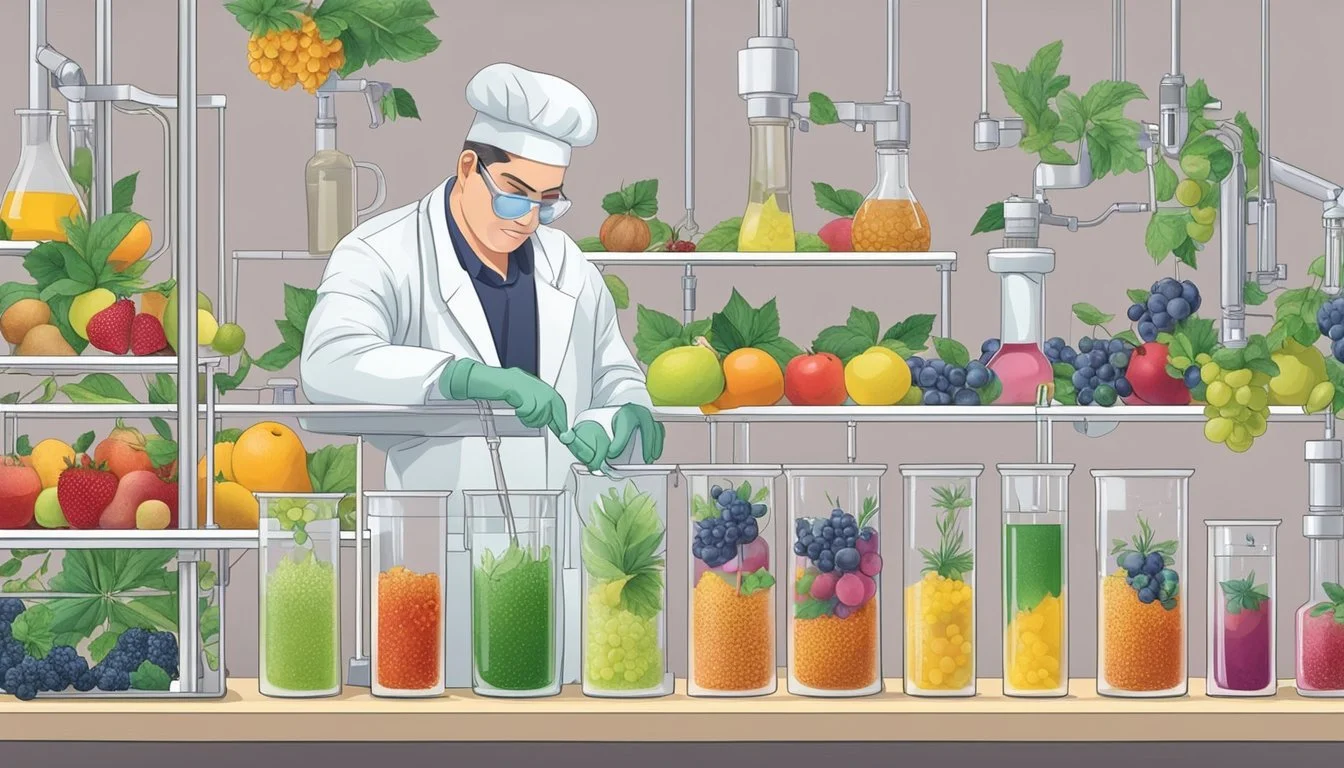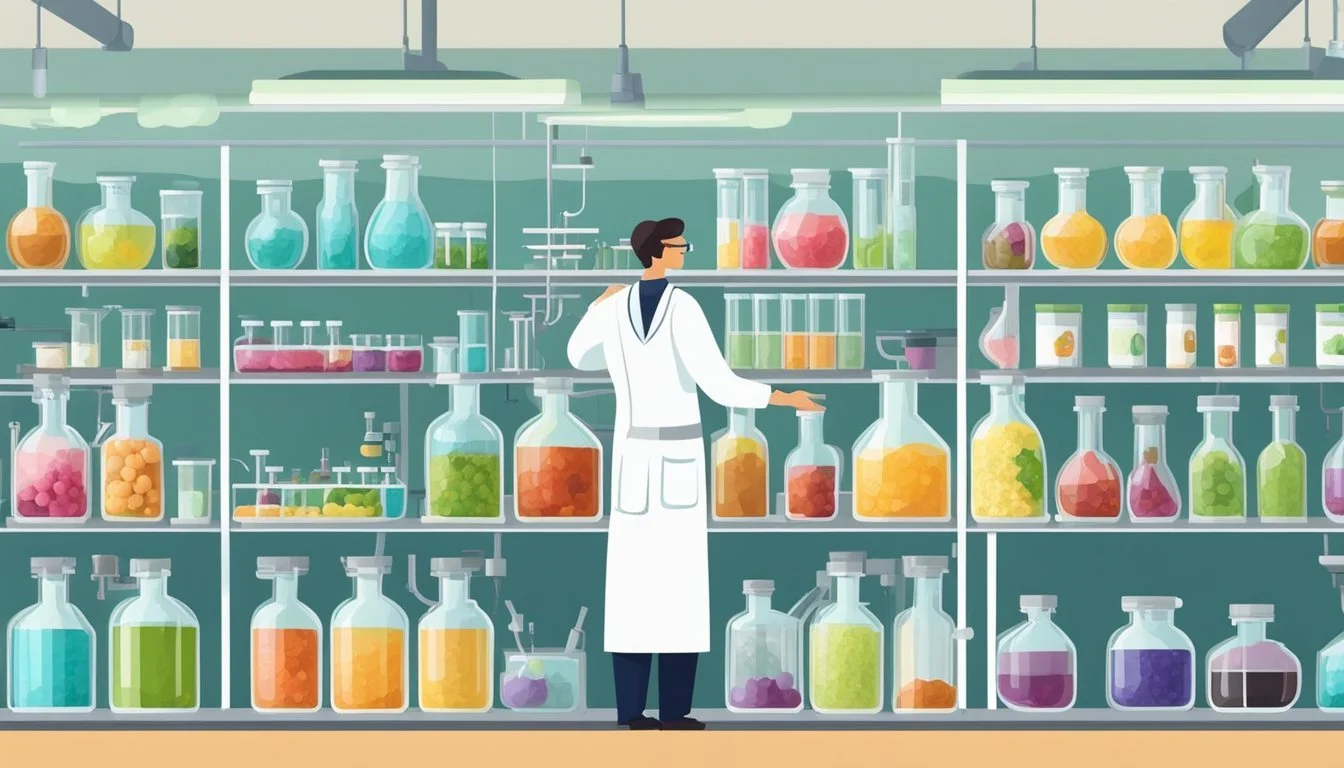Are Natural Flavors Healthier Than Artificial Ones?
Unpacking Myths and Facts
When selecting foods and beverages, consumers often encounter the terms "natural flavors" and "artificial flavors" on ingredient labels. This distinction has led to a widespread assumption that natural flavors are healthier options compared to their artificial counterparts. Natural flavors are derived from plant or animal sources through processes such as distillation, extraction, or roasting. Consumers interpret this "natural" origin to suggest a product that is potentially more beneficial to health and well-being.
However, whether natural flavors are indeed healthier is a complex issue. Both natural and artificial flavors are designed to provide a specific taste without contributing nutritional value. Artificial flavors are synthesized in a laboratory setting but chemically, they often replicate the molecular composition found in natural sources. While certain individuals may opt for natural flavors due to personal preferences or perceived health benefits, the evidence does not necessarily support the notion that they are healthier. The safety and effect on health of flavorings, whether natural or artificial, are largely regulated and evaluated by food safety authorities to ensure they are safe for consumption.
The distinction between natural and artificial flavors does not inherently translate to a difference in health benefits. This has prompted experts to scrutinize the "health halo" that surrounds products labeled with natural flavors. Products containing natural flavors are not nutritionally different from those with artificial flavors, and ingredients derived from nature are not automatically safer than synthesized ones. The decision to choose natural over artificial flavors may, for many consumers, be more related to marketing, perception, and taste rather than an evidence-based assessment of healthiness.
Definition of Flavors
In the food industry, the term "flavor" refers to compounds that impart taste or aroma to food and beverages. Flavors are categorized into two main types based on their origin: natural flavors and artificial flavors.
Natural Flavors
Natural flavors are derived from substances extracted from edible sources such as fruits, vegetables, spices, herbs, meats, and dairy products. They are obtained through processes like roasting, cooking, and fermentation. These flavorings are composed of compounds that are identified as the same chemicals found in the natural product they are meant to mimic. However, being labeled "natural" does not necessarily imply health benefits or nutritional value.
Artificial Flavors
Artificial flavors, on the other hand, are synthesized chemical compounds created in a laboratory to replicate the taste or aroma of natural ingredients. Flavor chemists design these compounds to mimic the flavor profile of their natural counterparts. While they may be structurally similar to natural flavors, they are not derived from natural sources. Artificial flavors are generally used because they are often less expensive and more stable than natural flavors.
Sources and Extraction of Flavors
The creation of flavors, whether natural or artificial, involves a range of methods for extraction and synthesis from various sources. This section explores the origins of natural flavors and the processes used to produce artificial flavors.
Natural Flavor Sources
Natural flavors originate from plant or animal sources and can encompass a wide range of substances, including fruit juice, vegetable juice, edible yeast, bark, buds, root leaves, and other plant materials. These elements may undergo processes such as fermentation or distillation to isolate the flavor compounds. For example, the essence of a fruit can be captured by squeezing or processing the fruit to extract the juice, which contains the flavor components. Similarly, extracts from bark or other parts of plants can be obtained using solvents or oils to seep out the flavors naturally present in them.
Sources:
Plant material: including herbs, roots, fruits, and vegetables
Animal source: such as dairy products or meats, used sparingly
Methods:
Fermentation: to derive flavors from yeast or other microorganisms
Distillation: to concentrate and purify the natural essences
Production of Artificial Flavors
In contrast, artificial flavors are synthetic counterparts to natural flavors, created through chemical processes. These flavors may have the same chemical composition as their natural equivalents but are produced in a controlled laboratory setting. Chemists can replicate the molecular structure of natural flavor molecules by combining various chemicals derived from inorganic or organic sources. This synthetic process allows manufacturers to create a consistent flavor profile that would be hard to achieve with natural sources due to variability in crops and seasons.
Synthesis:
Chemical replication: matching the molecular structure of natural flavor compounds
Consistency: ensuring a uniform taste that is not affected by natural variations
Safety and Regulations
When evaluating the safety of natural and artificial flavors, it's crucial to understand the regulatory framework governing their use. The Food and Drug Administration (FDA) plays a central role in setting safety standards, and a specific list known as "Generally Recognized as Safe" or GRAS, guides the use of flavoring substances.
FDA Oversight
The Food and Drug Administration (FDA) regulates both natural and artificial flavors to ensure they are safe for consumption. Under FDA regulations, a flavoring substance must be evaluated for safety and approved before it can be used in food products. The safety evaluation includes considering possible food allergies and toxicological concerns. Flavoring substances are also assessed for the presence of synthetic solvents or artificial preservatives. It is important for consumers to understand that a label indicating "natural flavor" does not necessarily mean a product is free from these substances, as the origin of the flavor is the defining factor, not the processing method.
GRAS List
The FDA maintains the Generally Recognized as Safe (GRAS) list, which includes flavors that experts consider safe for consumption based on available scientific data. Flavor substances are added to the GRAS list following a rigorous review process. Once a flavor is on this list, manufacturers can use it in food products without additional FDA approval, with the understanding that it is used in typical quantities typical for consumption. However, it should be noted that this does not prevent individual food allergies or sensitivities to GRAS substances. If an ingredient is not on the GRAS list, manufacturers must petition the FDA for a food additive regulation to ensure its safety.
Note: The presence of an ingredient on the GRAS list does not mean it is inherently superior to artificial flavors. The distinction lies in the source rather than the safety profile.
Health and Nutrition
In the debate on whether natural flavors are healthier than artificial flavors, it's pivotal to focus specifically on their nutritional value and potential health concerns.
Nutritional Value
Natural flavors and artificial flavors essentially contribute no nutritional value to food products; they are incorporated to enhance taste. Both types are generally used in quantities that are too small to have a significant nutritional impact. Consequently, they do not add calories, carbohydrates, fats, or proteins to one's diet in a measurable capacity.
Health Concerns
The use of flavoring agents—natural or artificial—raises health questions regarding their long-term effects. Consumers often perceive foods with natural flavors as healthier, a phenomenon known as a health halo. However, the distinction between natural and artificial in terms of health benefits is not as straightforward. Both natural and artificial flavors are considered safe by food safety authorities, but many advocate for more comprehensive testing to fully understand the implications of chronic exposure to these food additives. Some individuals may show sensitivities or allergies to specific flavoring components, whether they are natural or synthetic.
Culinary Uses
In the culinary world, natural and artificial flavors play a crucial role in enhancing the taste and aroma of foods and beverages. They are key components in creating enjoyable and diverse eating experiences.
Flavor Enhancement
Natural flavors are derived from various sources such as spices, herbs, fruit, and vegetable juices. Chefs and food manufacturers use them to amplify or add complexity to the inherent tastes of food. For instance, lemon zest can provide a fresh, tangy accent in a baked good, while vanilla, which is derived from orchids, is often used to enrich the flavor profile of both sweet and savory dishes.
Artificial flavors, on the other hand, are synthesized in laboratories but can mirror the flavors found in nature. Their role is essentially the same: to enhance or introduce specific flavor notes. Their consistent quality and often lower cost make artificial flavors a popular choice in large-scale food production and cooking.
Food Pairings and Cooking
When it comes to food pairings and the cooking process, the selection between natural and artificial flavors depends on the desired outcome and the characteristics of the main ingredients. For natural flavors:
Dairy products: Flavors such as natural vanilla or nut extracts can complement dairy-based recipes, such as ice cream or custards, by adding depth.
Beverages: Citrus zest or infused herbs can elevate drinks, from teas to cocktails, by introducing fresh and nuanced aromas.
Artificial flavors are more stable at high temperatures and often used in:
Baked goods: Because they do not lose their intensity during the cooking process, they can ensure a consistent taste experience.
Confectioneries: Their precise flavor profiles are ideal for candies and sweets, providing the exact flavor notes needed.
Both natural and artificial flavors have their own place within culinary arts, each with their unique applications and benefits. Chefs often choose based on the required flavor, cost, stability under cooking conditions, and consumer preference.
Economic and Environmental Impact
In evaluating the impact of natural versus artificial flavors, considerations extend beyond health into economic and environmental arenas. The balance between cost efficiency and sustainability presents a complex scenario for consumers and producers alike.
Cost Efficiency
Natural flavors often come with a higher price tag due to the complexity of sourcing and extracting these substances from their organic origins. Production processes for natural flavors may involve multiple steps, including cultivation, harvesting, and extraction, which accumulate significant costs. Artificial flavors, conversely, are typically less expensive to produce as they are synthesized in a laboratory setting, allowing for a more controlled and cost-effective production.
Cost Factors:
Natural: Higher resource investment for extraction and sourcing.
Artificial: Lower production costs due to laboratory synthesis.
Sustainability
The sustainability of natural flavors can be contentious due to the environmental consequences of their sourcing. Extraction of natural flavors may necessitate intensive farming practices and can lead to forest clear-cutting, which in turn contributes to habitat loss and increased carbon emissions. Artificial flavors, while not reliant on agricultural space, carry their own concerns regarding sustainability, especially considering their production in chemical facilities with varying levels of environmental compliance.
Environmental Consequences:
Natural: Potential for significant ecological impact including deforestation and greenhouse gas emissions associated with agricultural practices.
Artificial: Environmental cost of chemical production and potential pollution.
Consumer Perceptions and Marketing
When exploring the role of natural flavors versus artificial flavors, consumer perception and marketing strategies play a significant role. Food labels and packaging often highlight "natural" ingredients in an effort to appeal to health-conscious consumers.
Marketing Strategies
Marketers strategically position natural flavors as healthier options on food packaging to capitalize on the "health halo" many consumers associate with natural ingredients. They often exploit this perceived value to justify higher pricing and create differentiation in competitive markets.
Health-Oriented Branding: Marketers tend to emphasize the use of natural flavors on the packaging, with terms like all-natural and organic, influencing purchase decisions.
Consumer Appeal: There is a targeted effort to align natural flavors with lifestyle choices, positioning these products as essential for those who prioritize wellness.
Label Transparency
Transparent labeling on food products can sometimes be misleading, leading consumers to be inadvertently hoodwinked. The distinction between natural and artificial flavors is not always as clear-cut as the labeling may imply.
Regulatory Definitions:
Natural Flavors: Derived from plant or animal material.
Artificial Flavors: Created in a laboratory setting.
Consumer Expectations: Despite the definitions, consumers expect transparent labeling to provide a straightforward understanding of product contents, not just compliance with minimal regulatory standards.
Future of Flavoring
The flavor industry stands on the brink of transformative changes driven by technological advancements and regulatory oversight. These developments promise to redefine how flavors are created and regulated.
Innovation in Flavor Production
Flavor chemists and flavorists are harnessing emerging technologies to revolutionize flavor production. The University of Minnesota is one such hub where innovation meets practical application, delving into the chemical composition of flavors to produce novel, palate-pleasing sensations. Flavorists are refining biotechnological methods to create flavors that not only mimic their natural counterparts but also remain stable and cost-effective. For instance, through fermentation and enzymatic processes, flavorists can convert simple sugars into complex flavor molecules, often resulting in purer flavors that can withstand the rigors of food processing.
Regulatory Developments
Regulatory authorities, including the USDA and the Food and Drug Administration (FDA), continue to update guidelines in response to advances in flavor technology and safety assessments. The push for transparent labeling and the distinction between natural and artificial flavors occupy a significant portion of these developments. A combination of stricter safety evaluations and consumer demand for 'clean label' products is expected to lead to more clearly defined regulatory parameters. The industry anticipates future regulations to rely heavily on the proven safety and chemical identity of flavor compounds, irrespective of their natural or synthetic origins.







